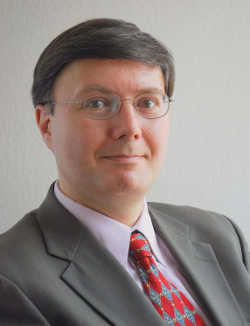
Dennis Fordham. Courtesy photo.
California’s just revised proposed state budget shows that Gov. Newsom intends to reinstate the Asset test for Medi-Cal eligibility.
Previously, on Jan. 1, 2024, California had abolished the asset test. Currently, assets are not considered when a person applies for any type of Medi-Cal, whether it is community based (at home) or long term care Medi-Cal (at a skilled nursing facility).
However, the proposed budget shows that the $2,000/$3,000 (single/married couple) assets limits for countable non-exempt will return in 2026. Medi-Cal would revert to pre-2024.
Prior to Jan. 1, 2024, Medi-Cal had the following asset categories: (1) Exempt assets, (2) non available non exempt assets, and (3) available non exempt assets. Exempt and unavailable assets are not counted in the asset test. Available non-exempt assets do count. California residents with excess countable assets would make them non countable or else transfer them in ways that did not result in an ineligibility period to receive Medi-Cal.
People seeking Medi-Cal eligibility had the following ways to become Medi-Cal eligible without transferring assets: spend down non exempt assets (e.g., excess money), make non exempt assets unavailable (e.g., placing them for sale), purchase a special type of single premium annuity, give non exempt assets away (typically to relatives) or else place assets into a special needs trust to make the assets unavailable. Anytime a person already on Medi-Cal received an inheritance, these approaches were often applied.
Transferring assets and avoiding any transfer penalties, in the right situation, was also widely used. California’s long-standing 30 month look back rules required Medi Cal eligibility workers to count non exempt assets gifted away during the 30 month look back period (prior to Medi-Cal application). Such transfers could result in an ineligibility period for Medi-Cal eligibility, especially if not done correctly.
However, the transfer rules are unlikely to apply to transfers made between Jan. 1, 2024, and Jan. 1, 2026.
Presently, transfer rules are irrelevant with respect to transfers made after Jan. 1, 2024, and 2026. Also, prior to Jan. 1, 2024, Medi-Cal did not consider the transfer of an exempt asset (e.g., a person’s residence) as a disqualifying transfer because such retaining exempt assets did disqualify a person from Medi-Cal, but did eliminate them from the estate for estate recovery at death.
Now, during 2025, people receiving or expecting to need Medi-Cal will likely re-examine whether their existing assets and anticipate any future inheritances they might receive would disqualify their continued or future Medi-Cal eligibility after 2025.
Naturally, purchasing new (or improving existing) assets that are exempt for Medi-Cal eligibility purposes (e.g., a dwelling, a vehicle, household contents, a burial policy, services) is the first “go to” approach. Transferring assets to family or using a special needs trust are next step approaches.
Families of existing Medi-Cal recipients in long term skilled nursing facilities (”SNF’s”) are likely going to consider what to do with the soon to be excess countable resources (e.g., money in the bank, brokerage, second homes, etc.) under a possible restored asset test and whether to act prior to 2026.
California’s possible reinstatement of the Medi-Cal eligibility asset test would bring us back to familiar but undesired Medi-Cal eligibility planning territory. Nothing is yet certain. But the possibility needs careful monitoring and a getting ready to act; perhaps even prior to Jan. 1, 2026.
The foregoing is not legal advice. Consult a qualified elder law attorney for guidance.
Dennis A. Fordham, Attorney, is a State Bar-Certified Specialist in estate planning, probate and trust law. His office is at 870 S. Main St., Lakeport, Calif. He can be reached at

 How to resolve AdBlock issue?
How to resolve AdBlock issue? 



